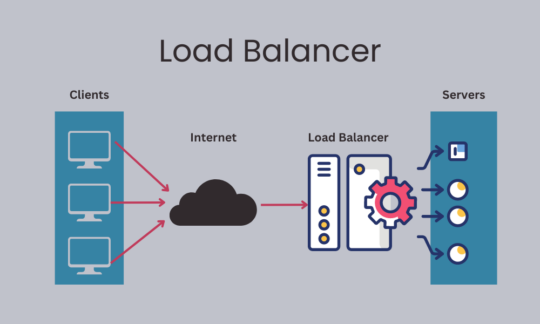You own a website! That's amazing. Suddenly, your site starts buzzing and drawing more visitors. In short, your business is going well. However, the server is unable to handle the sudden traffic spike.
That isn't comforting! You face downtime, slower page loading speed, and, in the worst case, a site crash. So, it would help if you had a plan B or an effective solution to handle all the incoming traffic and keep your business running smoothly online, even during peak times.
They are considering a technology called load balancers. In this blog, we'll learn about load balancers, how they work, key benefits, and more.
Let's get started.
What are Load Balancers?
A load balancer is a device or software application that distributes and balances the incoming traffic among multiple servers to offer higher availability and performance to websites or applications.
The main aim of the load balancer is to decrease server response times, increase throughput, and boost client speed. Even if one server goes down, the load balancer redirects the traffic to the servers that are online.
Working with Load Balancers
Here's how the it work:
- Firstly, load balancers receive the incoming network requests from the client and distribute them among a pool of servers.
- The distribution is done using different methods and algorithms.
- As soon as the server processes the request, the load balancer sends the response back to the client.
- This means that the entire load is not on a single server, helping to enhance the overall performance and reduce latency and response times for your websites/applications.
Benefits of Load Balancers
Below are the prime benefits of using it:
Enhanced Scalability
One of the crucial benefits of load balancers is the ability to scale quickly. Based on network requirements, load balancers can scale the server infrastructure. Here's a typical example:
Suppose your website suddenly starts getting a lot of traffic. If the server is unable to handle the load, it can lead to a crash. On the other hand, load balancing can be a saviour in this scenario, as it can distribute the traffic among multiple servers, preventing this mishap.
Application Security
There is no need to worry about security regarding load balancers. They come with built-in security features that add another layer of protection to your apps. They can also efficiently handle distributed denial service attacks and block all the malicious content from the network. Additionally, it can route traffic through network firewalls for additional security.
SSL Termination
Load balancers can handle SSL encryption and decryption processes, offloading these resource-intensive tasks from backend servers. This process is known as SSL termination, and it helps reduce the burden on servers and boost overall performance.
Reduced Downtime
Companies working globally and in multiple time zones benefit from load balancing, mainly regarding server maintenance. For example, a company can shut down the server during maintenance and route the traffic to other load balancers to reduce downtime or server crashes.
Types of Load Balancers
Hardware Load Balancer
The hardware load balancers use physical appliances to distribute traffic across different servers. These load balancers range from Layer 4 to Layer 7 and can handle HTTP, HTTPS, and UDP traffic.
Software Load Balancer
These are the applications that carry out all the load-balancing functions. You can install them on any server.
Virtual Load Balancer
A virtual load balancer is a type of load-balancing solution used in virtual environments, such as data centres, that operate with virtualization technologies, such as KVM and VMWare, as virtual machine instances.
Types of Load Balancing Algorithms
A load-balancing algorithm is a rule set by a load balancer to know the best server for different client requests. The following are the types of load-balancing algorithms:
Round Robin
As the name suggests, this algorithm uses the Domain Name System (DNS) to continuously assign requests to every server.
IP Hash
The client's IP address is used to know which server receives the request.
Least Connections
The server with the fewest active connections to clients receives a fresh request. This server is determined by considering each server's relative computing capacity.
Final Words
Load balancers are key players in maintaining and improving the availability, reliability, and performance of websites and applications. As mentioned earlier, it distribute network traffic across multiple servers, preventing server load. This way, you can enjoy smooth and constant availability.
You can rest assured that your online projects will succeed with the load balancers. For more on tech-related topics, head over to WisdomPlexus now.
Recommended For You:





